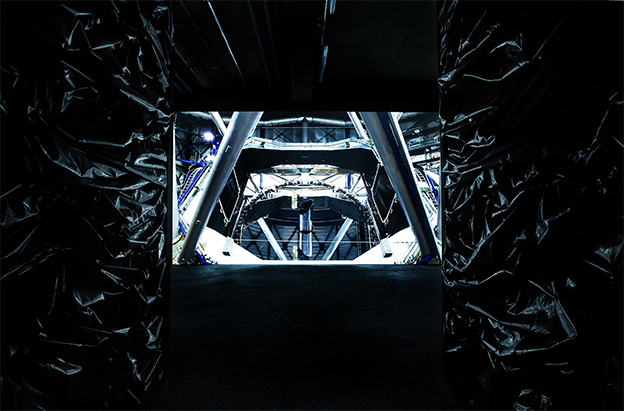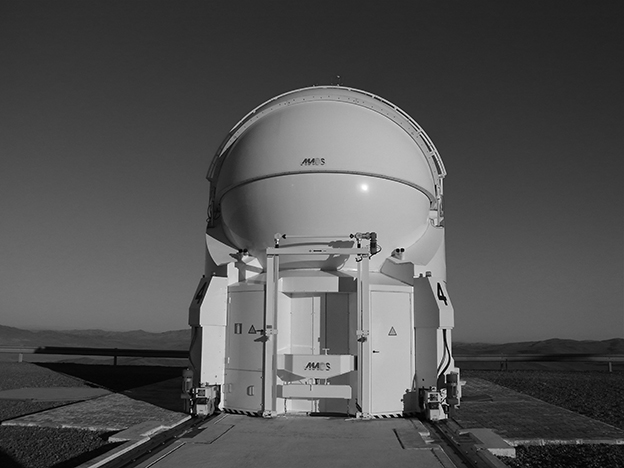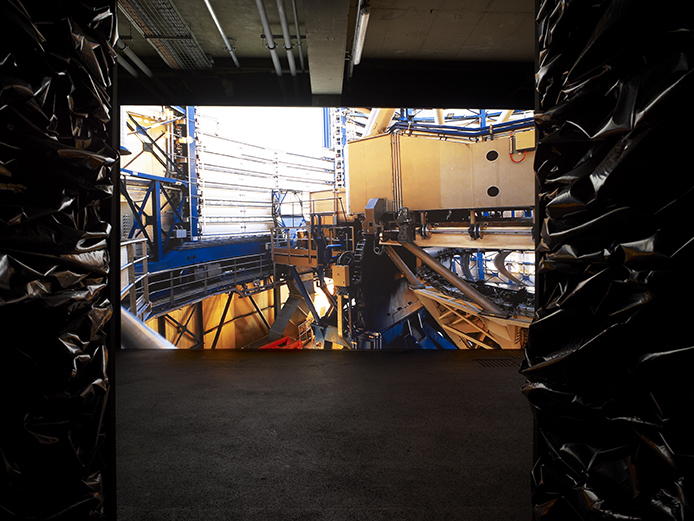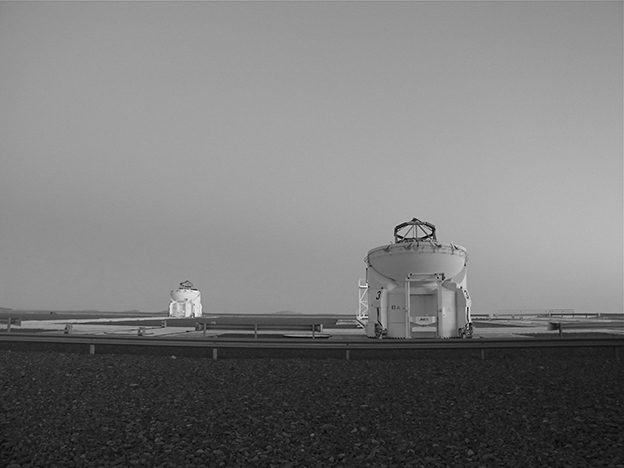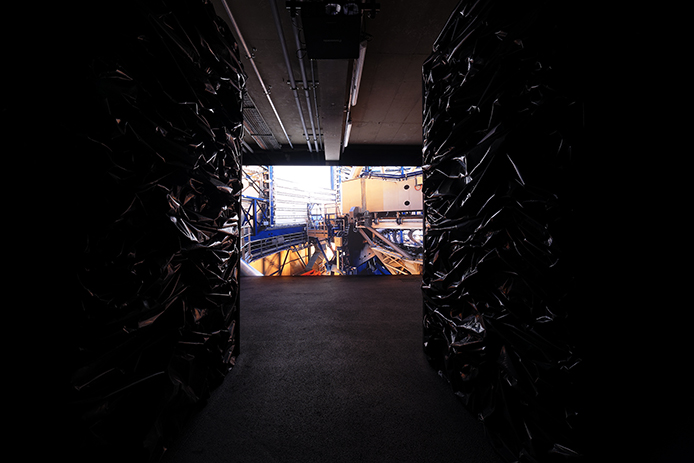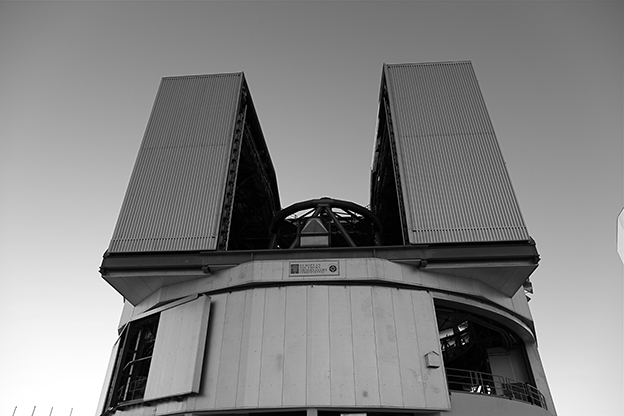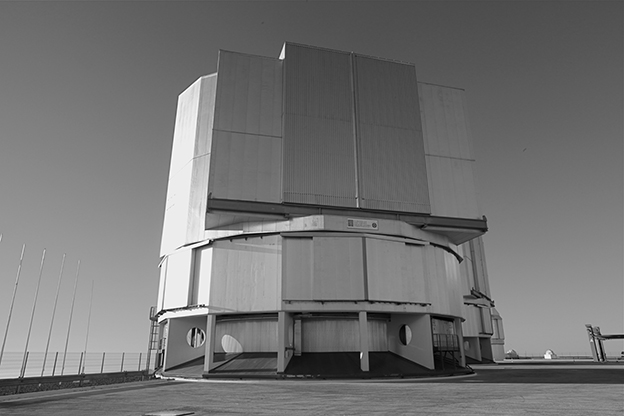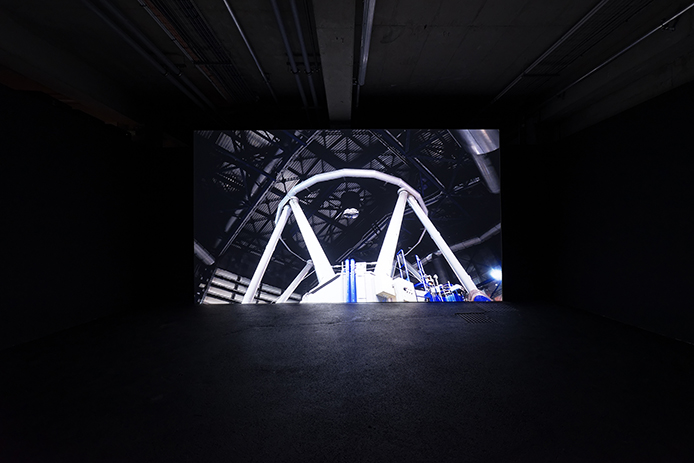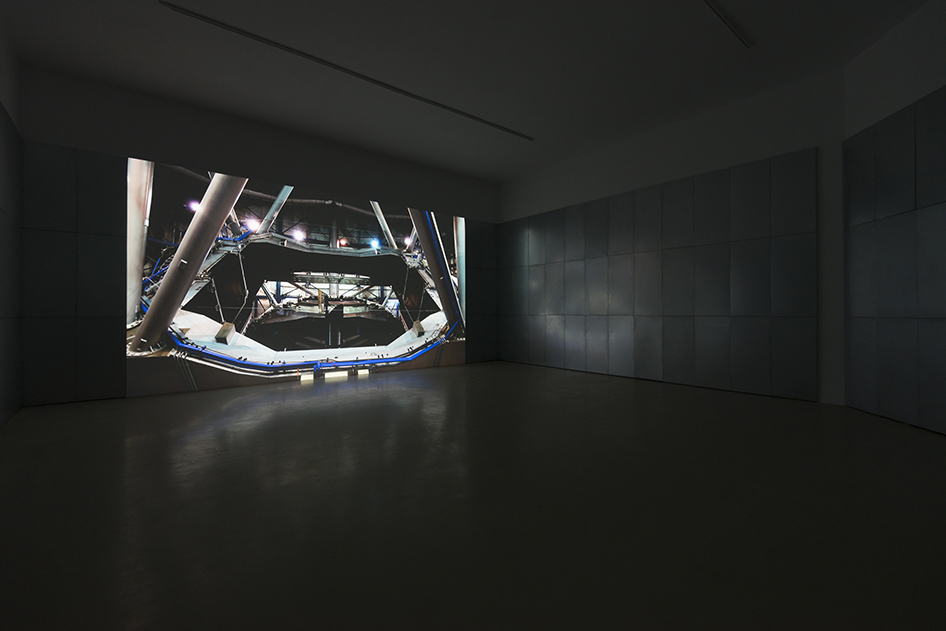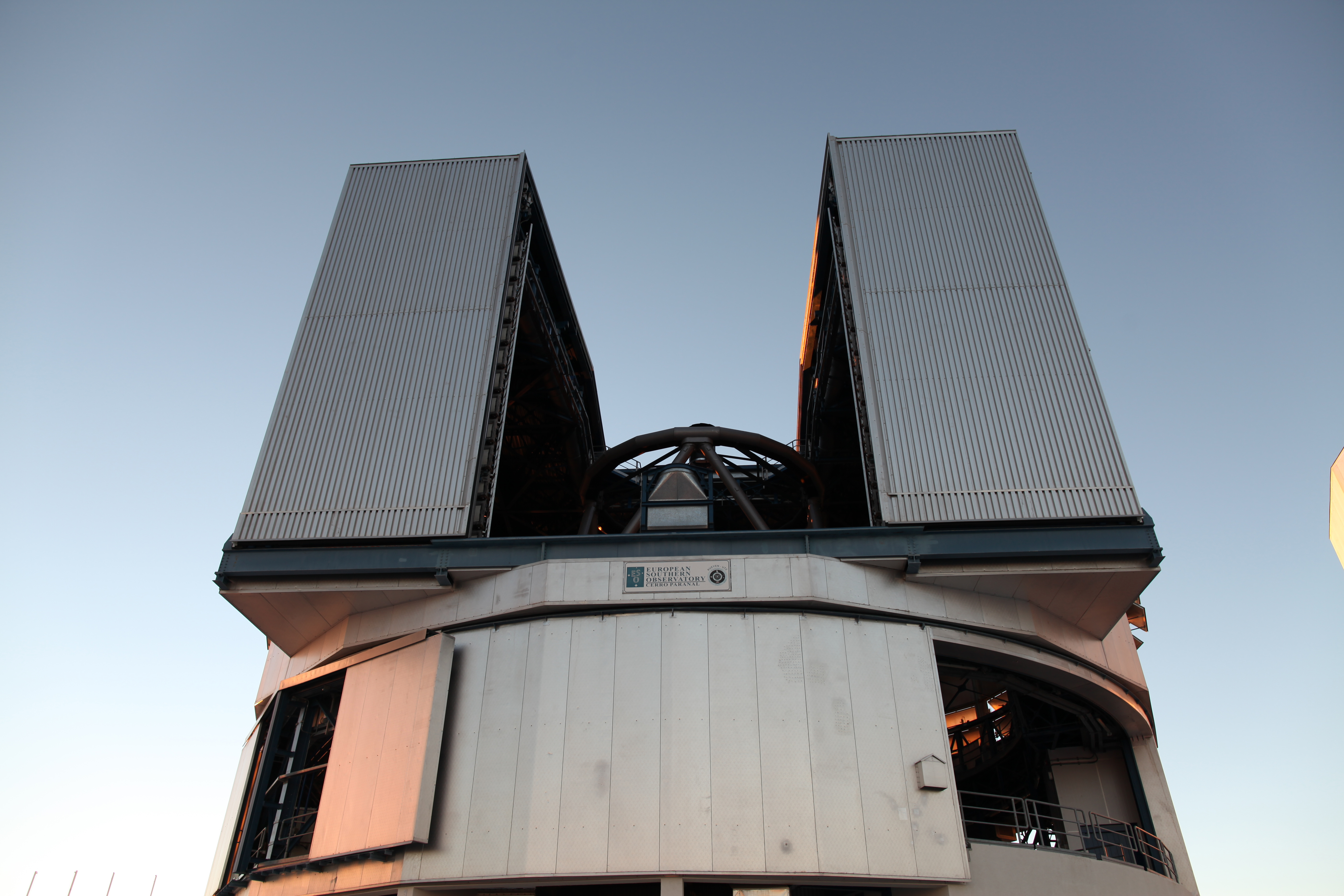400 Billion Planets, 2014
video installation, film, colour, sound, 4’27’’ loop
104 metal plates
«In an almost unworldly location,» as the Atacama Desert in the Andes has been described, extreme conditions prevail. It is one of the driest places in the world. In 2003, researchers published a report indicating that the drying reaches a liminal possibility for life. The air is so thin that the people who stay and work in some of its regions are forced to use oxygen masks. The extremely low humidity, high altitude, and an almost total absence of clouds make it an ideal place for the observation of the sky. Additionally favorable is the fact that it is far from human settlements – away from radio and light pollution. All these elements were decisive in locating the European Southern Observatory in three places throughout the desert: in La Silla (the earliest observatory, with telescopes of medium size at a height of 2400 m above sea level), at the top of Paranal (2600 m above sea level), and at Llano de Chajnantor plateau (5000 m above sea level) where, among others, the revolutionary radio telescope.
ALMA is located (Atacama Large Millimeter / submillimeter Array, created in collaboration with North America, Europe, East Asia, and Chile). ESO’s Paranal Observatory houses the Very Large Telescope, which represents the most advanced optical instrument in the world, consisting of four independent Main Telescopes (the main mirrors have a diameter of 8.2 meters) and four movable Auxiliary Telescopes (1.8 meters). One of the main objectives is the study of planets outside our solar system. «Few people know that one of the Chile’s most precious assets is its pristine night sky..» – This statement is mentioned in one of the videos documenting the actions of ESO, which exploits this Chilean resource using powerful and complex technology. In the interpretation of Angelica Markul, it is precisely this technique that is fascinating, but in parts, because it places us on the threshold of technological unawareness, because knowledge becomes the interpretation of the data provided for by the equipment – one of the four Main Telescopes make up the Very Large Telescope. To the same extent as desire, the mechanics and aesthetics of this device inspire Angelika Markul, which are intended to satisfy this desire, that is, the desire to explore the remote corners of the cosmos.
Shows
What is lost is at the beginning, solo show, CSW Ujadowski Castle, Warsaw, Poland, 2016.
Curator: Jaroslaw Lubiak
Terre de départ, solo show, Palais de Tokyo, Paris, France, 2014.
Curator: Daria de Beauvais
The Unleashed Forces : Angelika Markul and the contemporary demonism, solo show, Sztuki Lodz, Poland, 2013. Curator: Jaroslaw Lubiak
Collection
CSW Ujadowski Castle, Varsovie, Poland
Bunkier Sztuki Gallery of Contemporary Art, Cracovie, Poland
